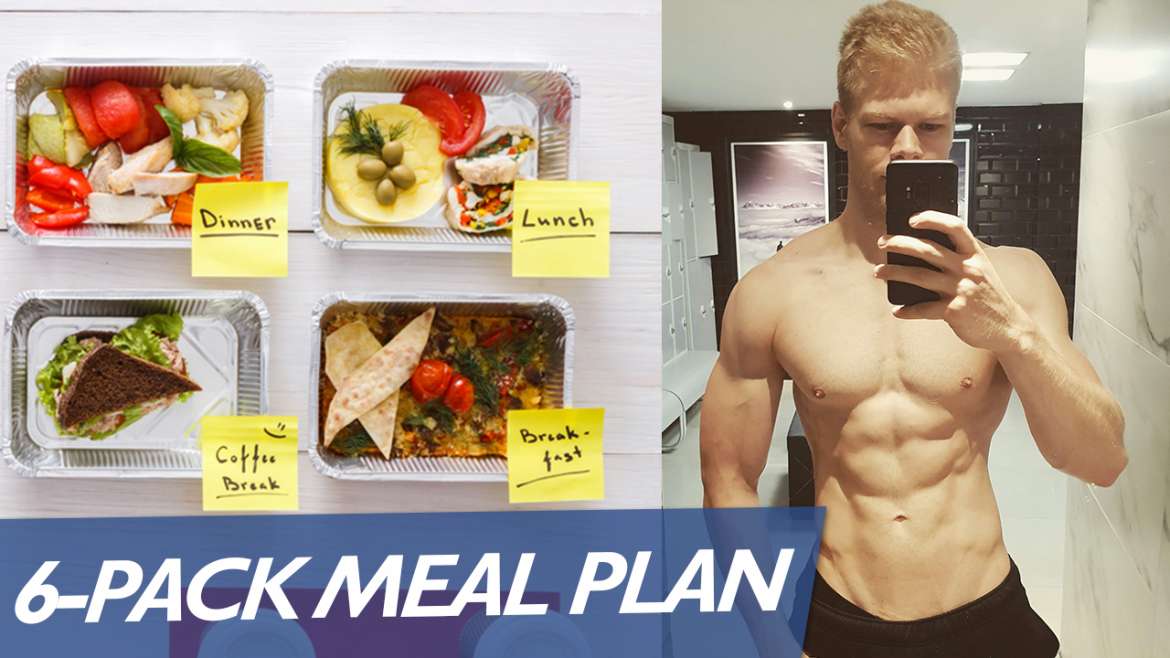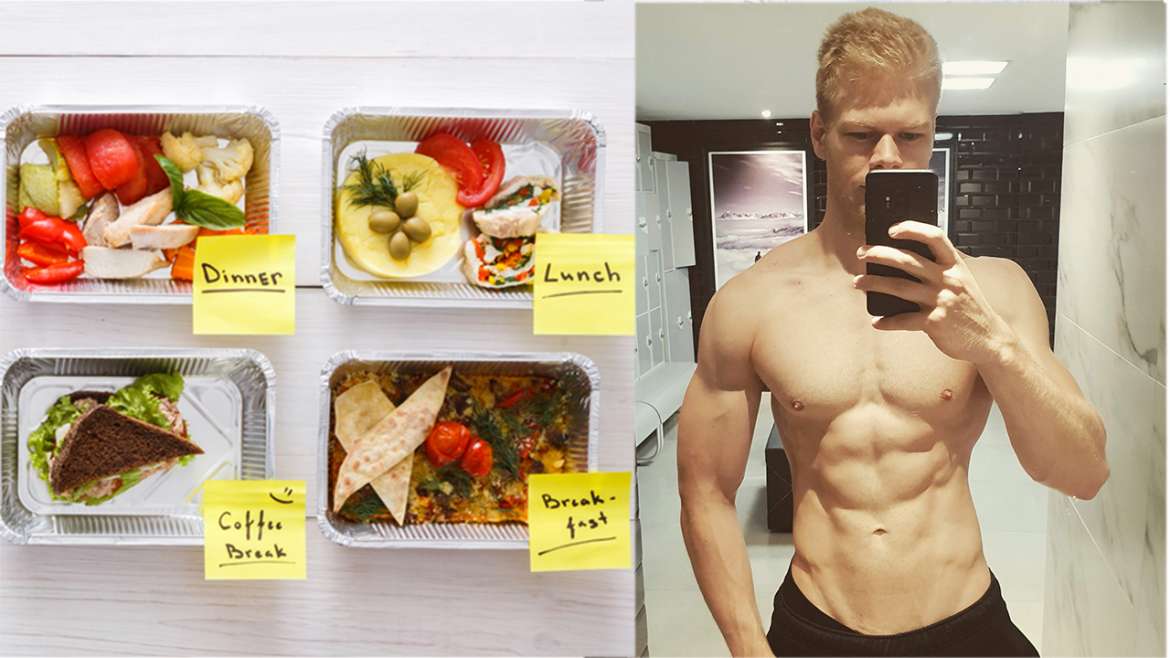For many beginners getting a six-pack is one of the main reasons they get into fitness and start dieting. And that’s great. Having nice abs is amazing and will definitely get you a lot of attention from the other sex.
But because everyone is talking about them, many people have a completely false idea in their head about what it takes to get a six-pack. They think you have to do hundreds of crunches or ab exercises daily, when in fact that’s the best way to burn yourself out in no time.
If you want to make your abs pop your first priority should always be your body fat percentage. The truth is that we all have abdominal muscles, but in most cases they are hidden underneath a big layer of belly fat. You can do as many crunches as you want but you won’t notice any difference unless you get rid of the fat first. That’s why step number 1 for our six-pack diet plan will be to reduce belly fat.
Step 1: Reduce Belly Fat
How do we do this?
…with a smart and consistent calorie deficit. The reason I say smart and consistent is because if your calorie deficit is too large you will not only lose fat but also strength and muscle. So we don’t want to crash diet or stop eating altogether. But if your calorie deficit is too small, you fat loss progress will be extremely slow and you will probably lose motivation before you even start seeing any results.
That’s why the ideal calorie deficit is somewhere in the middle at around 20 – 25% below your maintenance level. That way you will lose fat fairly fast around 1 to 1,5 pounds per week but won’t lose all your strength and can still exercise normally.
Step 2: Optimize Your Macronutrients
Next, you need to get your macronutrients right, so your protein carbs and fats. The most important here is protein, which you want to get quite a bit of to further minimize the risk of muscle loss.
When you are in a calorie deficit a good protein intake is around 1 gram per pound of body weight. If you are starting from a pretty high body fat percentage you can go a bit below that and instead shoot for 0.8 grams per pound of body weight. But the leaner you get the higher should be your protein intake.
How much carb and fat you eat is less important than your protein intake, but you still want to get them right. I always suggest to get 20% of your daily calories from fat and simply fill the rest with carbs. I have videos on how to do these calculations step by step to make sure to check those out.
Step 3: Control Hunger With The Right Meals & Snacks
We all feel hungry on a diet and it’s just part of it. But of course there are ways to minimize the hunger and make dieting as enjoyable as possible. That’s where the right foods come into play. When you can’t eat a lot of daily calories you want to make sure to get the most bang for your buck.
That’s where high-volume, low-calorie foods come into play. These foods will occupy more room in your stomach and make you full, but because they are low in calories they don’t make you fat. Good options are foods like broccoli, cauliflower, lettuce or cucumber.
You can eat massive amounts of them and still lose weight. When setting up my meal plan, what I like to do is to combine these vegetables with some sort of protein. That way you can eat a lot, the meals are healthy and you will lose weight.
For example, one super easy meal is to take a vegetable mix (you can use the frozen vegetables you get at the supermarket) and add some beans and chicken. Season everything with curry or just normal pepper and then you’re good to go. It tastes good is perfect for weight loss and will make you full.
Make sure you have a list of such meals ready when you start your six-pack diet. You can download my free sample meal plan so you don’t have to worry about coming up with a good recipe last minute.
Step 4: Hydration
Obviously when you exercise your body needs more water. But there is also another reason why a high water intake is important. As you diet, your cortisol will increase which leads to more water retention under your skin. Basically, your body holds on to all the water it can get and stores more of it than normal. This makes you look puffier and overall less ripped.
To get rid of this problem you want to make sure to drink plenty of water. Your urine should always be light yellow. If it’s dark yellow you are not drinking enough and up your water intake.
Before I go to the last step I should mention that the right balance of sodium and potassium also plays a major role in your water retention. Sodium can be found in tables salt and potassium can be found in many vegetables and fruits like bananas. So if you feel your body retains too much water, play around a bit with these foods and see if you notice a difference.
Step 5: Get Enough Essential Fatty Acids
When you are dieting you want to make sure to get enough essential fatty acids. Those are your omega 3s and 6s, which the body cannot make itself and needs to derive from foods.
These two are vital for health and hormone production. Because longer dieting can have a pretty drastic impact on your hormone levels I always try to get around 3 grams of either fish oil or flaxseed oil every day, which are both packed with omega 3 and 6. This will ensure a healthy hormone balance and good testosterone levels.
And those are the 5 steps to set up a six-pack diet plan. At this point it’s really all about adherence and want to follow this diet at least for a few weeks to see results. Along the way you probably want to tweak your calorie and macronutrient intakes as you progress and your body composition changes.



